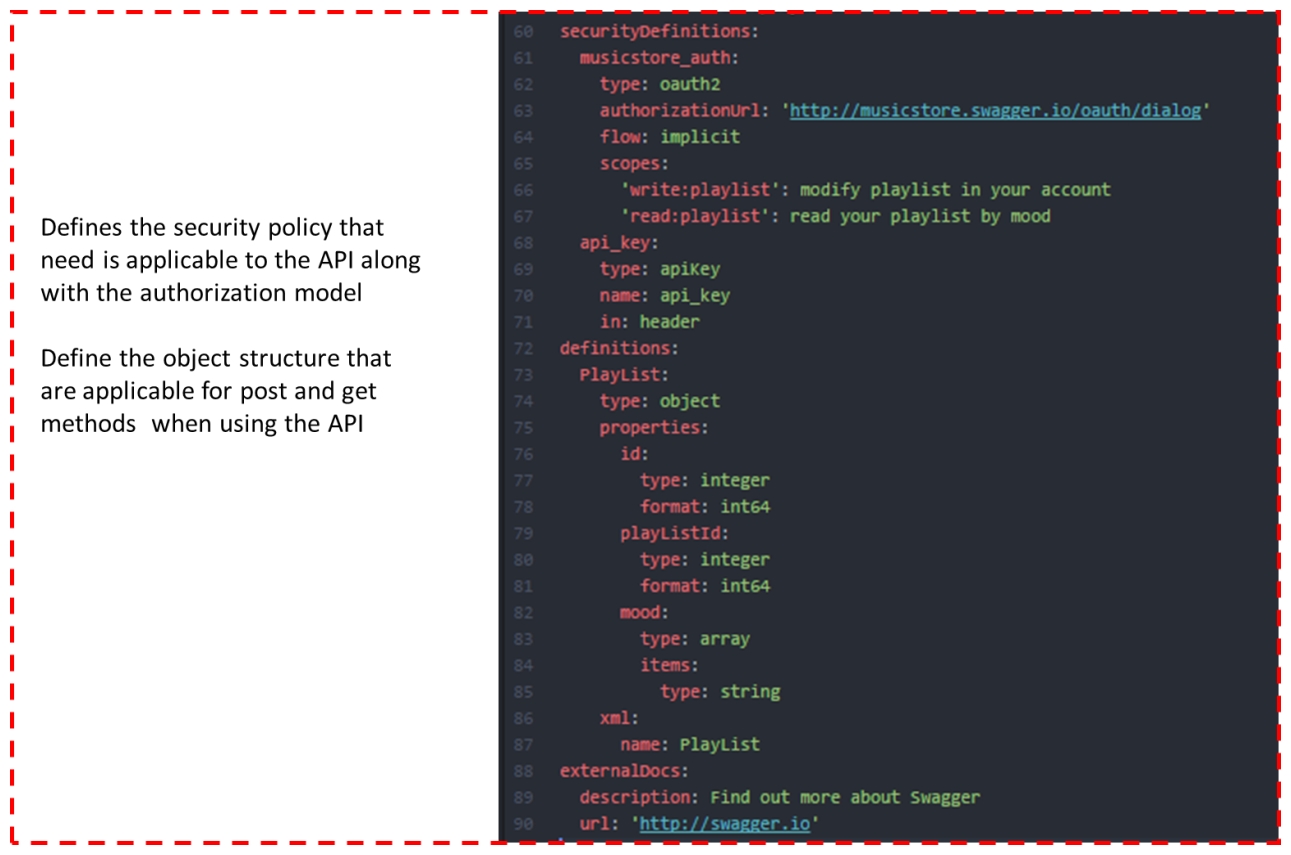API modeling
There are two standards that are competing to describe the APIs—Open APIs and RESTful APIs. We will discuss them more in the following sections.
Open API
The Open API initiative is focused on creating and promoting a vendor-neutral API description format based on the Swagger specification. The Open API specification allows us to define a standard, language-agnostic interface for REST APIs, which allows both humans and computers to discover and understand the capabilities of the service without access to source code.
In the following figures, we have described a sample API definition based on Open API along with the various sections:

Code continues in the following image:

Code continues in the following image:

RESTful API Modeling Language (RAML)
RESTful API Modeling Language (RAML) is a standard language to describe the RESTful APIs. RAML is written in the same way as YAML, which is a human-readable data serialization language. The goal of RAML is to provide all the necessary information...


































































